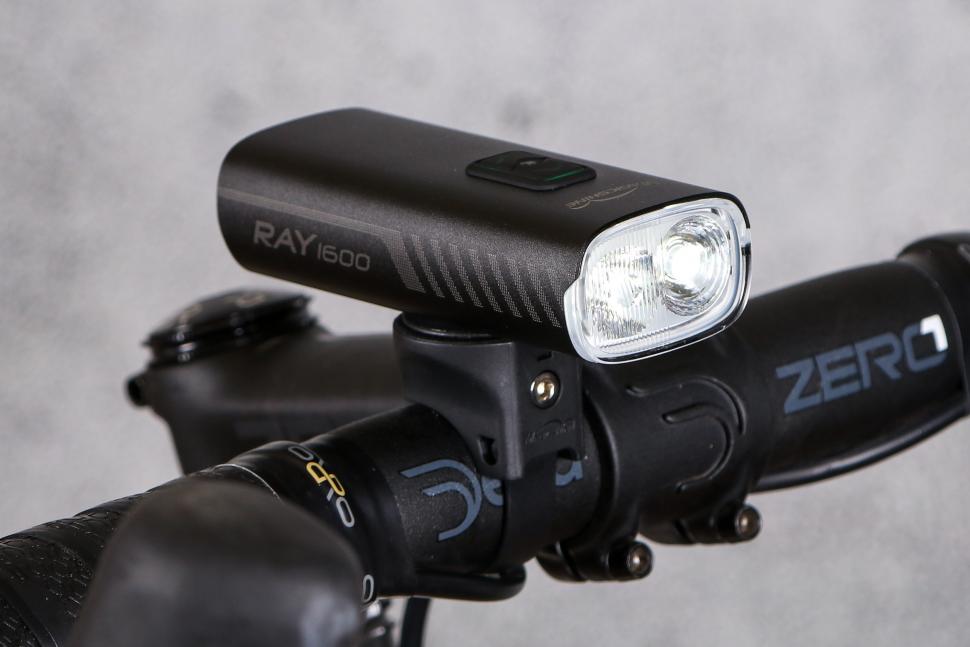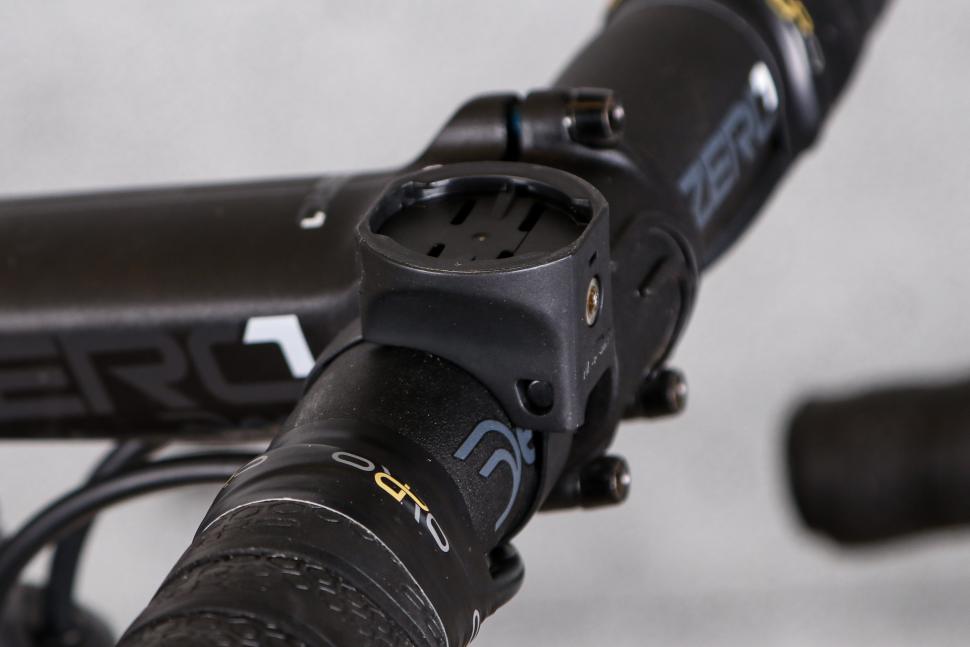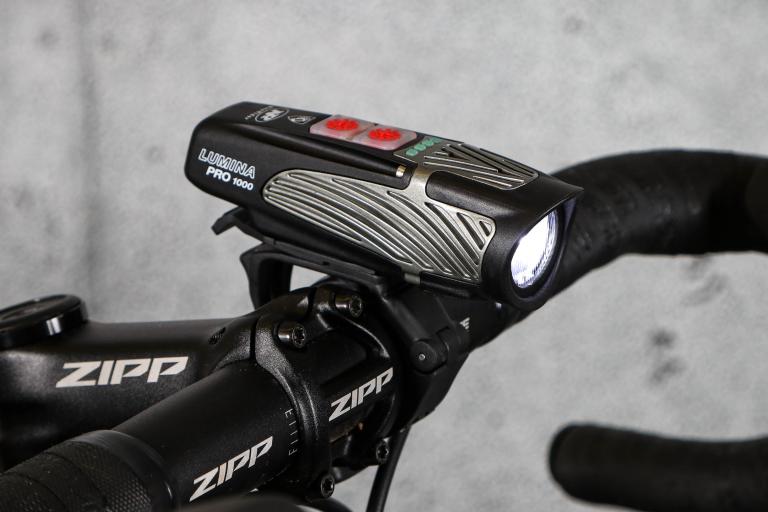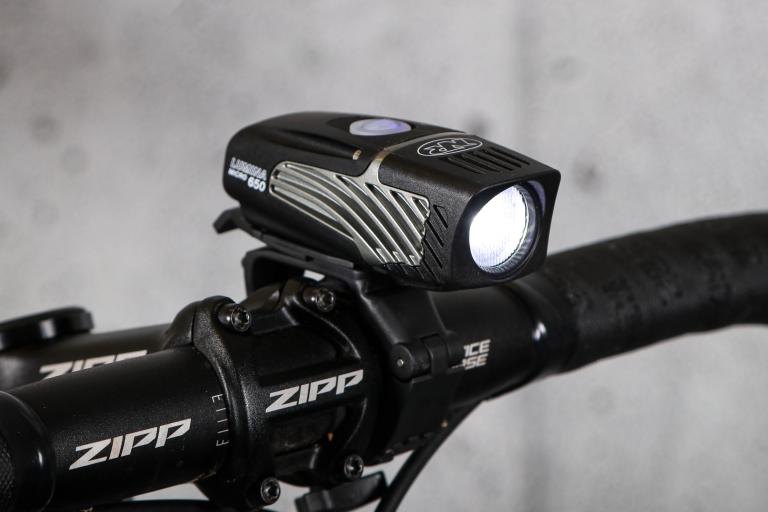- News
- Reviews
- Bikes
- Accessories
- Accessories - misc
- Computer mounts
- Bags
- Bar ends
- Bike bags & cases
- Bottle cages
- Bottles
- Cameras
- Car racks
- Child seats
- Computers
- Glasses
- GPS units
- Helmets
- Lights - front
- Lights - rear
- Lights - sets
- Locks
- Mirrors
- Mudguards
- Racks
- Pumps & CO2 inflators
- Puncture kits
- Reflectives
- Smart watches
- Stands and racks
- Trailers
- Clothing
- Components
- Bar tape & grips
- Bottom brackets
- Brake & gear cables
- Brake & STI levers
- Brake pads & spares
- Brakes
- Cassettes & freewheels
- Chains
- Chainsets & chainrings
- Derailleurs - front
- Derailleurs - rear
- Forks
- Gear levers & shifters
- Groupsets
- Handlebars & extensions
- Headsets
- Hubs
- Inner tubes
- Pedals
- Quick releases & skewers
- Saddles
- Seatposts
- Stems
- Wheels
- Tyres
- Health, fitness and nutrition
- Tools and workshop
- Miscellaneous
- Buyers Guides
- Features
- Forum
- Recommends
- Podcast
review
 2022 Magicshine RAY 1600.jpg
2022 Magicshine RAY 1600.jpg£79.99
VERDICT:
Great all-round light, ideal for riding on any terrain
Maximum 1,600lm output means you can flood the path ahead
Multiple output options for all conditions
Heavy duty design
High capacity battery
Easy to use
Close beam floodlight is dipped downwards, so not ideal if you want to hang your light upside down
Mount can work itself loose
Fairly heavy at 204g
Weight:
204g
Contact:
At road.cc every product is thoroughly tested for as long as it takes to get a proper insight into how well it works. Our reviewers are experienced cyclists that we trust to be objective. While we strive to ensure that opinions expressed are backed up by facts, reviews are by their nature an informed opinion, not a definitive verdict. We don't intentionally try to break anything (except locks) but we do try to look for weak points in any design. The overall score is not just an average of the other scores: it reflects both a product's function and value – with value determined by how a product compares with items of similar spec, quality, and price.
What the road.cc scores meanGood scores are more common than bad, because fortunately good products are more common than bad.
- Exceptional
- Excellent
- Very Good
- Good
- Quite good
- Average
- Not so good
- Poor
- Bad
- Appalling
The Magicshine Ray 1600 is a very versatile front light. Thanks to its dual LED design and multiple settings, it's ideally suited to riding from dusk to dawn, whether commuting, out with friends or on an audax. With a heavy-duty machined aluminium body, it's also good for drops onto tarmac at speed – not that I'd recommend doing this…
If you're interested in the Magicshine Ray 1600, check out our guide to the best bike lights for more options.
Having used a wide variety of single beam LED torches, I reckon the Magicshine Ray 1600 offers a serious step up in performance. With dual LED lights and four different lighting combinations, it provides optimal lighting for every condition.
> Buy now: Magicshine Ray 1600 for £72.99 from Amazon
Paired with a 5,200mAh battery, Magicshine quotes a maximum run-time for the Ray 1600 just shy of 51 hours (50hrs, 46mins) on low-output single-beam settings, down to 1 hour 41 minutes if using the maximum output dual-light configuration.
It's all packaged inside a sleek, CNC machined aluminium body which is rated to withstand drops up to one metre according to Magicshine – I can vouch for this, too (more about that later).
A rubber bung on the back of the light provides access to the USB-C charging port, while on top you've got two control buttons allowing you to change light settings up or down.
On the bottom, there's a mount that's compatible with GoPro (and similar) systems.
The Magicshine Ray 1600 has an IPX6 waterproof rating, meaning it can withstand torrential downpours. You might not plan to ride in such weather, but it does offer peace of mind if you get caught out.
It all gets delivered in a sleek black box with all the mounts and tools you could ever need: a 3mm hex tool, a handlebar mount, GoPro mount, 'aero-compatible straps' and a USB-C cable. The bar mount is quite neat and the different length aero-compatible straps mean you can easily mount the Magicshine on a range of handlebars.
Unfortunately, the design of the mount itself is a bit lacking. It requires the 3mm hex to secure the light onto your bar, and I found it can shake itself loose over rough surfaces – which is how I happen to know the light can withstand drops at speed. It's a good idea to always check the mount before heading off on a ride.
Bulbs and beams
Magicshine describes the two LED lights as a 'unique combination of long reach spot light and a close flood light'. It's an apt way of describing the lighting options they provide.
There are four brightness settings whether you're in either of the single or dual modes – Eco (100lm), Low (200lm), Mid (400lm) and High (800lm) on the single beam settings, double those for the dual beam. Either 'side' can be used individually, so plenty of options.
On the left side of the Ray 1600, you get the long reach spotlight. The best way of describing it is that it appears to act in a similar manner to the high beam of a car – producing a bright patch straight ahead. Up close, it also appears that the light is more focused centrally. I found the Mid good for riding down country lanes, giving enough light that you can plan your route in advance.
In comparison, the right side provides a close floodlight. It provides the same amount of light as the left, yet it's noticeably dipped downwards. The overall spread of light is noticeably larger with a less bright central spot. Generally, I found the close floodlight on the low setting (200lm) suitable for dimly lit streets.
Unfortunately, as I tend to hang my lights underneath my handlebar, this downward dipped close beam makes it less suitable for my use cases. Even more so when considering it could shine into other road users' (and pedestrians') eyes.
> Check out our guide to the best front lights
You also get two flash settings: a low-intensity or high-intensity pattern. With both offering 200lm of brightness, they're excellent at drawing attention, but I would have preferred additional options with varied sequences; it's personal preference, but I feel they draw attention better.
In reality, I found myself defaulting to the dual beam modes, as I found they offered the perfect combination of lighting for my day to day riding at this time of year, the low (400lm) when commuting and cycling around town, and the mid (800lm) for unlit country lanes, enabling me to see and dodge ruts and potholes and also offering enough run-time to comfortably complete a couple of decent length rides per charge.
If you did want to go bombing downhill, the 1,600lm output of the high setting provides an impressive floodlight so you can see everything in your immediate path, as well as looking further ahead.
Easy to use
As I said earlier, the Magicshine Ray 1600 features two buttons for adjusting up or down between brightness settings (Eco to High). To turn the light on and off, either button can be held down, and to change modes, you double-click either button.
I found it intuitive and easy to use, with the ability to change between light settings a real highlight – one click to change them, either up or down. Certainly, I found it a significant improvement on lights I've used where you have to cycle through all the brightness settings before you get to the one you want.
Run-times and recharging
On the Eco settings, you can expect a run-time around the 50-hour mark (although I can't see any use for such a dim light).
Realistically, I spent the majority of my riding switching between the Low and Mid settings of the dual LED output, and couldn't fault the run-times – if anything, I would suggest that the 3:23hr guide time for the Mid setting (800lm) was on the cautious side.
Nestled between the buttons is the battery indicator. It provides a constant indication of the Ray 1600's charge status: Green (20-100%), Red (10-20%) and Flashing Red (0-10%).
As someone who charges their lights regularly throughout the week, it's unlikely that I'd run into issues, especially considering my average ride lasts 90 minutes to two hours. However, if you like to throw caution to the wind and don't regularly check your lights, a bit more indication could be useful. An orange light, perhaps, to indicate 50-30% would be a handy little reminder that it's time to consider charging your light again.
When charging, it'll flash red until it's fully charged.
Magicshine estimates a full charge will take about 2.50 hours. I tended to simply leave it to charge overnight once or twice a week and never ran out of juice.
Value
The Magicshine Ray 1600 usually retails for £79.99, although it's currently available from Magicshine's Amazon store for £72.99; either way, it's great value. You won't find many front lights offering the same output as the Ray 1600 at this kind of price.
Some come close – the ETC F1500 costs the same, but you're 100 lumens down (though Emily thought it was really good – and our results in the beam comparison engine back that up), but mostly you're paying a lot more.
For example, Ashley tested the Lezyne Mega Drive 1800i last year, and although excellent and offering another 200 lumens, it costs £160.
The NiteRider Lumina Dual 1800 also offers 200 extra lumens but costs £165, and Dave wasn't overly impressed with the performance for the money.
When testing the Magicshine I barely used the maximum output, so you could argue that a 1,000-lumen front light, such as the Ravemen PR1000 that Stef was testing last autumn, would be a good alternative – but as they cost around the same, you might as well go with more light just in case (though the Ravemen does come with extras, like a remote, and the ability to charge other devices).
Conclusion
The Magicshine Ray 1600 is great value, well built, offers good run-times and is easy to use. There's not much to dislike. Yes, the mount needs checking to make sure it's secure each ride, and the close floodlight beam doesn't work so well when you hang your lights under your bar, but these aren't dealbreakers – or at least won't be for everyone.
At the end of the day, the Magicshine Ray 1600 is a great front light, offering multiple options to suit all conditions.
Verdict
Great all-round light, ideal for riding on any terrain
road.cc test report
Make and model: Magicshine Ray 1600
Size tested: 1600 Lumens
Tell us what the light is for, and who it's aimed at. What do the manufacturers say about it? How does that compare to your own feelings about it?
Magicshine says: 'The powerhouse of RAY 1600 uses two power efficient LEDs with a combined max output of 1,600 lumens. Equipped with high transmittance spotlight and floodlight optical lenses, producing the perfect beam pattern for your nightly adventures. luminating every obstacle in your path. Suitable for mountain biking, trail crossing, road cycling and urban commuting etc.'
Tell us some more about the technical aspects of the light?
Magicshine lists:
Equipped with two high-power LEDs, individual max output 800L, combined maximum output of 1,600L
Unique combination of long reach spot light and a close flood light.
Up-down buttons with accurate battery display.
5200mAh capacity
USB-C fast charging and discharging.
Internal thermal management ensure consistent high output.
IPX6 rating, heavy rain resistant, all weather proof.
Universal Garmin quad lock style mount, easy to put on and take off.
Rate the light for quality of construction:
9/10
Constructed using CNC machined aluminium. High quality, although on the heavier side as a result.
Rate the light for design and ease of use. How simple was the light to use?
8/10
Buttons are easy to use and intuitive. I particularly liked the ability to go up and down brightness settings on each output (single and dual).
Rate the light for the design and usability of the clamping system/s
5/10
Handlebar mount worked itself loose over the rougher surfaces. Using a nut and bolt to create tension against the strap probably isn't the best design. It really needs to be checked before every ride.
The clamp is compatible with aero bars, though, which is a bonus.
Rate the light for waterproofing. How did it stand up to the elements?
8/10
Can't fault it. Been through rain without any issues. Can't see any reason for the IPX6 rating to be wrong.
Rate the light for battery life. How long did it last? How long did it take to recharge?
7/10
Experience has always taught me to expect run-times to be exaggerated, and as a result, I religiously recharge. But run-times here are good anyway.
Rate the light for performance:
8/10
I hardly needed to use the 1,600lm setting, all other options were more than adequate.
Some additional flash settings would be good, though, and the close beam spotlight isn't as useful if you hang your light underneath your handlebar.
Rate the light for durability:
9/10
Durable and tough. More than able to withstand 1m drops when moving (not just stationary).
Rate the light for weight:
5/10
Weighty for a front light thanks to the CNC alloy rather than plastic construction. A solid choice in the end because it ensures the light is impact resistant.
Rate the light for value:
8/10
Similar price to models offering less output, and significantly less than comparable models in terms of light output.
Tell us how the light performed overall when used for its designed purpose
Did everything Magicshine claimed. I spent most of my time in the dual LED output and didn't really see a reason to choose one of the single LED beams over the dual.
Tell us what you particularly liked about the light
CNC machining gives an air of durability.
Good run-times.
Easy-to-use buttons.
There's the option to use it as a battery pack, too, if required.
Tell us what you particularly disliked about the light
Handlebar mount isn't the most reliable.
Did you enjoy using the light? Yes
Would you consider buying the light? Yes
Would you recommend the light to a friend? Yes
Use this box to explain your overall score
It's a great choice, with a wide array of settings and modes so you'll always have the right amount of visibility. Its high-quality CNC machined aluminium body is weatherproof and has proven hardy, so you can expect it to last a while. My only real qualms are the mount, which needs to be checked regularly, and the close floodlight beam that doesn't work when you mount the light upside down. However, these are both minor issues and certainly wouldn't prevent me from recommending it. It does what you want, need and expect it to do, day or night, and it's great value to boot.
About the tester
Age: 24
I usually ride: BMC Teammachine SLR ONE My best bike is:
I've been riding for: Under 5 years I ride: Most days I would class myself as: Experienced
I regularly do the following types of riding: commuting, touring, general fitness riding,












It seems a cyclist was injured by those runaway horses. No details on how badly, that I can find. Most news outlets seem to be more interested in...
Taxis are the worst.
Quite. I was wondering where the cycling infrastructure is located that causes drivers to go 90 on the M3?
If one is prepared to pay £28 for a TPU tube, the butyl comparison should be Continental's Supersonic ~50g or Schwalbe at 70g. Both costing £8 - ...
I'd buy that for a dollar.
Media needs to do their part, but the readr/consumer also needs to do theirs as well:...
You can't do around getting rid of grass verges. They provide much needed parking space.
Kona makes practical, affordable commuter bikes and goes bust. Colnago makes toys for the affluent and it is booming. Just goes to show that the...
To answer your question, yes you can sometimes feel the difference. Built a set of wheels for a friend and he installed them with new lightweight...
Ah but taking pictures of things to defy the man (avoid a fine) is righteous. Taking pictures of people to grass on them to the cops (perhaps...